1920s
Lota Cheek
Apparently Lota Cheek was her real name.She was the daughter of Georgia farmer Leon Cheek. After winning a beauty contest in 1921, in which she was declared America's prettiest girl, she became a successful actress in New York City. In 1922, she was involved in a scandalous divorce case (her husband was simultaneously married to another woman). By 1925, she had remarried and took the name of her new husband, Sanders. The last record I can find of her is from 1927, when she was featured in an ad for Colgate toothpaste.

Wilmington Morning News - Jun 15, 1922
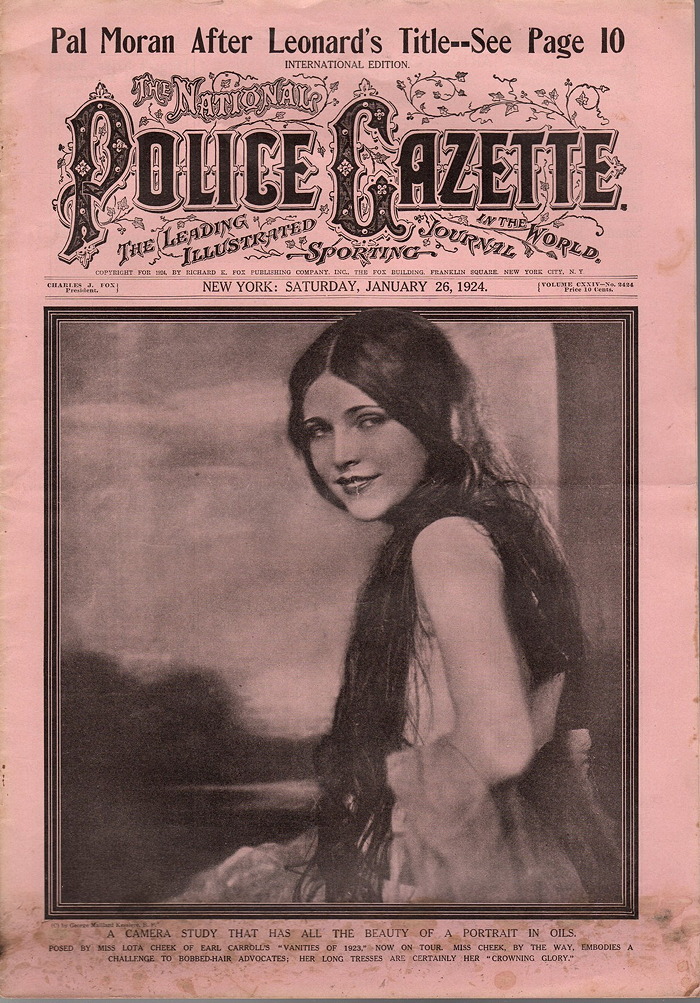
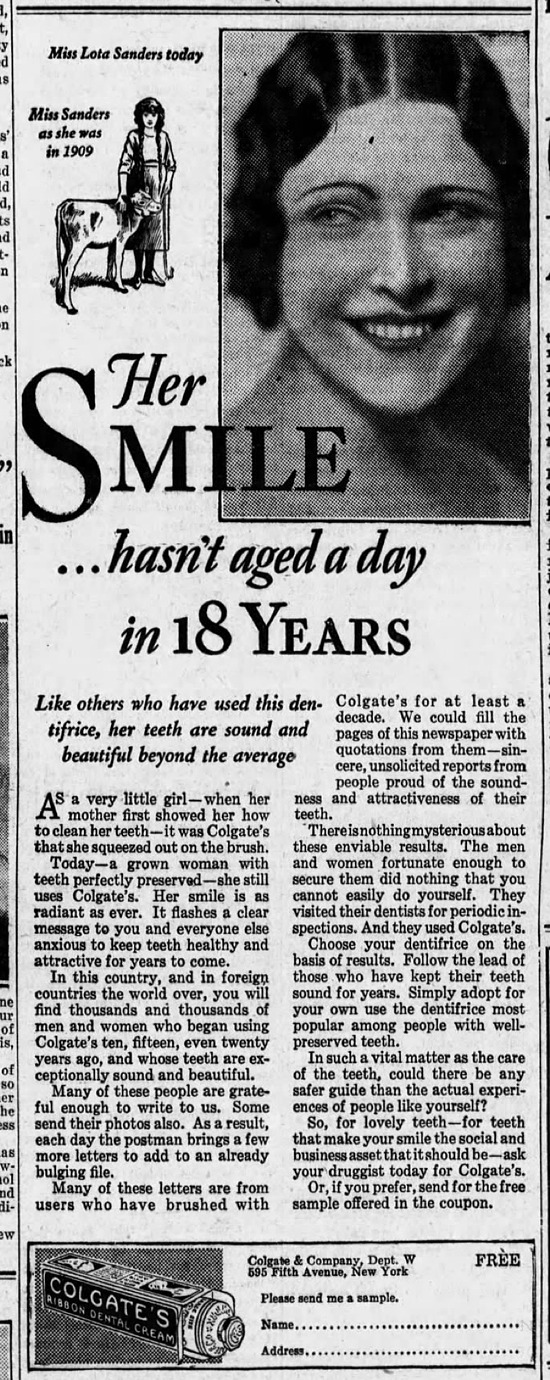
Baltimore Sun - Dec 8, 1927
Posted By: Alex - Wed May 30, 2018 -
Comments (2)
Category: Odd Names, 1920s, Actors
Puzzle devotees throng reading room
Crossword puzzles first became a fad in the 1920s, and immediately created a problem for libraries as puzzle devotees thronged reading rooms, putting a strain on library services, wearing out the various reference books, and generally being a nuisance to regular patrons of the library.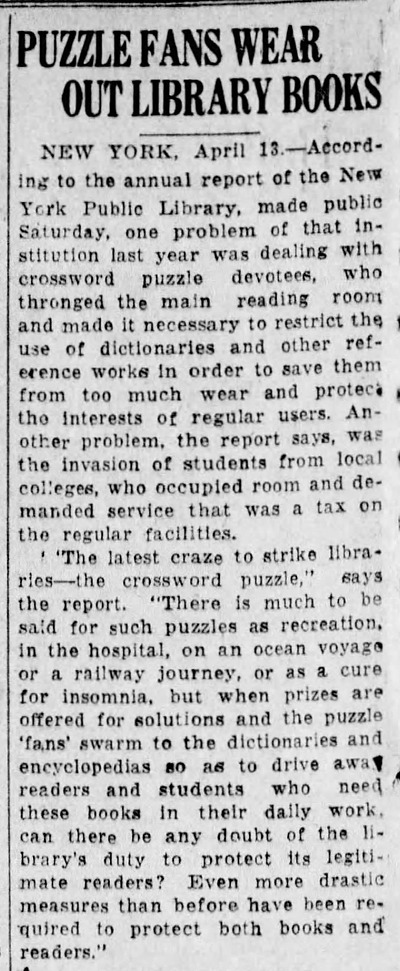
The Wilmington Evening Journal - Apr 13, 1925
Posted By: Alex - Sat Apr 21, 2018 -
Comments (4)
Category: Games, Libraries, 1920s
Astounding Beauty Clay
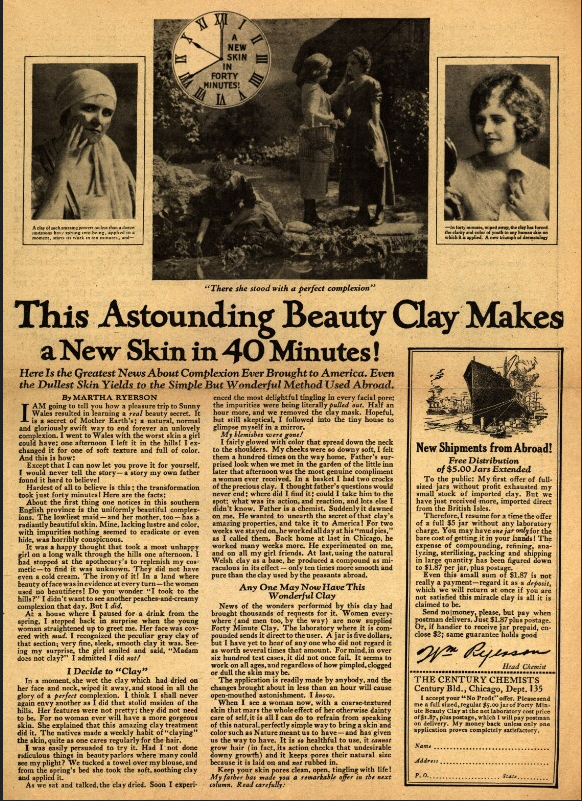
Go here for expandable version where text can be read.
Posted By: Paul - Mon Apr 16, 2018 -
Comments (3)
Category: Beauty, Ugliness and Other Aesthetic Issues, Advertising, 1920s
Cho-Cho the Health Clown

Cho-Cho was a "health clown" who toured the USA during the 1920s, visiting classrooms, and trying to encourage kids to eat more vegetables, take baths, and brush their teeth. In a way, he was like the opposite of Ronald McDonald (Ronald being a clown who encourages children to eat junk food).
CHO stood for "Child Health Organization," which was the group that dreamed him up and sent him out. Some more info from the book Children’s Health Issues in Historical Perspective:
All three travelled to elementary and secondary schools, as well as exhibitions, fairs, and "any place where children were gathered together. A less traditional figure was CHO's pseudo-professor Happy (played by Clifford Goldsmith), who entertained child and adult audiences with snappy health maxims.
Happy, the Health Fairy, and the cartoonist worked well within the boundaries of CHO's program, but when the clown who played Cho-Cho began to regard himself "as a real authority on diet, hygiene, and even the morals of childhood," and deviated from his "carefully learned lines," the organization had to find a new Cho-Cho.

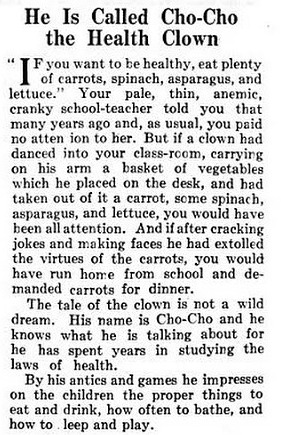
Popular Science Monthly - Feb 1920
Posted By: Alex - Thu Mar 22, 2018 -
Comments (2)
Category: Clowns, Health, 1920s
Michelin Hour
The short-lived Michelin Hour radio show, 1928, in which an orchestra of men dressed as tires played popular numbers and lighter classics.
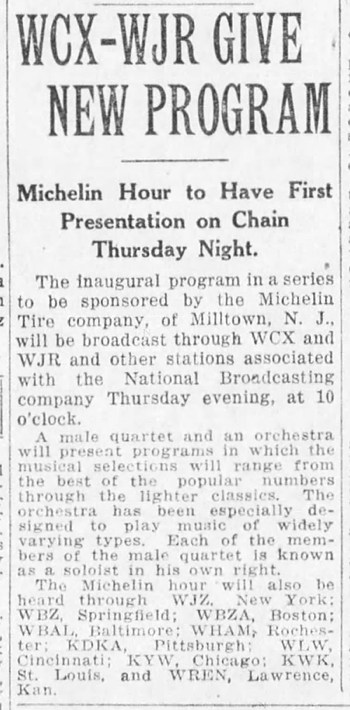
Detroit Free Press - Apr 8, 1928
Posted By: Alex - Wed Jan 31, 2018 -
Comments (6)
Category: Radio, 1920s
Follies of the Madmen #348

Sadistic dentist, with an eye toward cultivating future patients, gives out candy.
Posted By: Paul - Tue Jan 23, 2018 -
Comments (4)
Category: Medicine, Advertising, 1920s, Teeth
Unauthorized Dwellings 4
Houseboats have always been a prime source of contention as authorities try to police dwellings. The Amsterdam article is from 2016. The other news report hails from 1924.
Source.
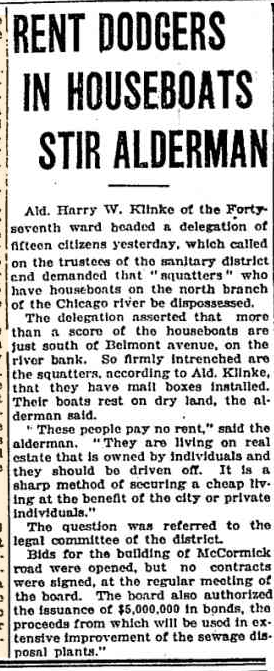
UPDATE: now behind CHICAGO TRIBUNE paywall.
Posted By: Paul - Mon Jan 08, 2018 -
Comments (0)
Category: Buildings and Other Structures, Oceans and Maritime Pursuits, Unauthorized Dwellings, 1920s, Twenty-first Century
Miss Plump of Coney Island
The winner of the 1925 Miss Plump of Coney Island contest was Jolly Irene, which was the stage name of sideshow performer Amanda Siebert. According to Marc Hartzman's American Sideshow:The pounds piled up and the flesh got fleshier. Diets were ineffective, leaving her helpless against her newly acquired mass. One reporter later described her as having "biceps three times as large as Jack Dempsey." But at 620 pounds, rather than box the heavyweight champion, she turned her tragedy into profit by joining Ringling Bros.
Siebert died in 1940, at the age of 65.

Baltimore Sun - Aug 26, 1925

Central New Jersey Home News - Nov 20, 1925

Louisville Courier-Journal - Dec 1, 1940
Posted By: Alex - Thu Dec 28, 2017 -
Comments (3)
Category: Awards, Prizes, Competitions and Contests, Human Marvels, 1920s
Mystery Illustration 65
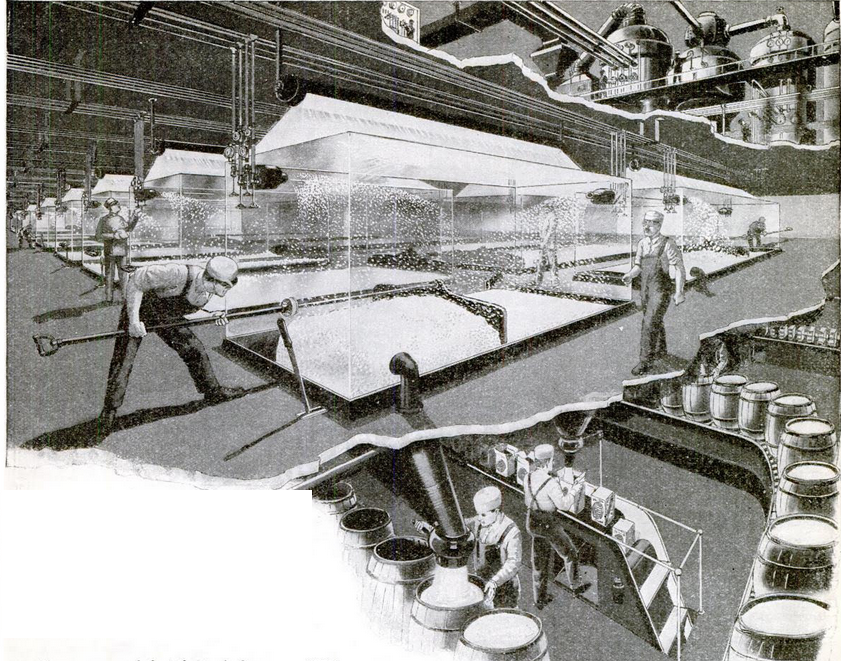
What are these guys making?
The answer is here.
Or after the jump.
More in extended >>
Posted By: Paul - Thu Dec 28, 2017 -
Comments (6)
Category: Technology, 1920s
Dr. Blatz’s Trick Chair of Terror
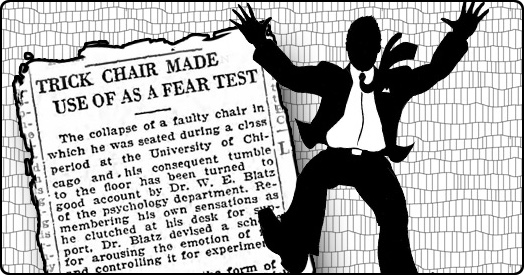
While he was a grad student at the University of Chicago in the early 1920s, William Blatz was sitting in class one day, leaning back in his chair, when suddenly the chair collapsed beneath him, sending him sprawling backwards, crying out in fright. The experience was unsettling, but it gave him an idea for an unusual psychology experiment.
He designed a trick chair that would collapse backwards without warning when he flipped an electric switch. The chair was padded, so its occupant wouldn't get hurt. But Blatz figured that the sensation of abruptly, unexpectedly falling backwards would provoke a strong, measurable reaction in subjects. This would allow him to study the physiology of fear under controlled, repeatable conditions. He performed his experiment on a series of unsuspecting victims.
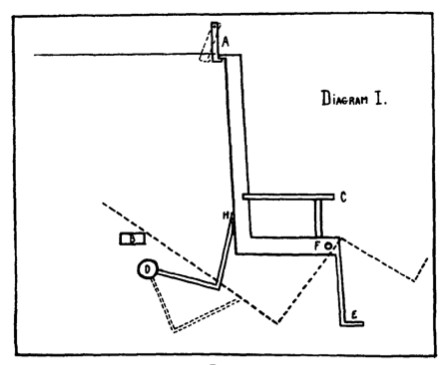
Diagram of Blatz's trick chair.
When the hook (A) at the top was released, the chair plunged backwards.
More in extended >>
Posted By: Alex - Tue Dec 26, 2017 -
Comments (2)
Category: Experiments, Psychology, 1920s

| Who We Are |
|---|
| Alex Boese Alex is the creator and curator of the Museum of Hoaxes. He's also the author of various weird, non-fiction, science-themed books such as Elephants on Acid and Psychedelic Apes. Paul Di Filippo Paul has been paid to put weird ideas into fictional form for over thirty years, in his career as a noted science fiction writer. He has recently begun blogging on many curious topics with three fellow writers at The Inferior 4+1. Contact Us |




